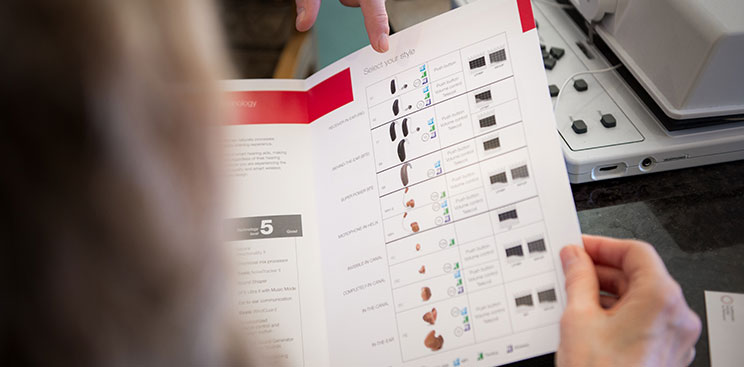
Hearing loss brings with it the exciting prospect of getting new hearing aids, which come in various designs, shapes, and sizes. Thanks to modern technology, your hearing aids may have various features and styles, which you may puzzling and intimidating. It is a good idea to educate yourself about the pros and cons of the various hearing aid styles that are out there.
Many people may not know this, but hearing aids are not always customized. Even though the fitting and the setting may be personalized for your unique hearing needs, the standardized hearing aid style may be readily available for selection directly from your audiologist’s display shelf. Customized hearing aids on the other hand, are ones that are made to fit your unique ear contour and are personalized for the individual patient.
Looking at the various types of hearing aids, there are six basic categories. These are: Invisible in the Canal (IIC), Completely in the Canal (CIC), In the Canal (ITC), In the Ear (ITE), and Behind the Ear (BTE), and Receiver in Canal (RIC) hearing aids.
IIC hearing aids are practically invisible from the outside since they are positioned within the second bend within your ear canal. This has the obvious advantage of being the most discreet since it is invisible from the outside for most ears. The closer location of the device to your inner ear also makes the sound quality a lot more enhanced and makes your own voice sound a lot more natural and clear.
The problem with the IIC hearing aids are that they use special, miniscule batteries that are not easy to handle, especially for those who have dexterity issues. Smaller batteries also mean shorter battery life, which result in more frequent battery changes necessary. Also, due to their tiny size, additional settings cannot be put within the device such as volume control and memory functions.
CICs are fitted deep within your ear canal and are somewhat larger in size compared to IICs. Due to their location, these are still discreet and not visible to others for the most part, which is their biggest advantage. Unfortunately, the same disadvantages of the IIC also apply to the CIC.
ITC hearing devices are located partially within your ear canal and are somewhat bigger than CICs. They have the advantage of being discreet as well as having controls such as volume settings and memory functions.
The drawbacks of ITCs are that they are somewhat visible from the outside and those with poor dexterity may have trouble handling the controls located on the devices.
ITE devices are available in two sizes; half shell and full shell. The half shell only occupies that lower portion of your outer ear, while the full shell covers most of your outer ear. The advantage of having ITEs is that they have settings that you can control and change. They are far easier to modulate compared to the IIC and CIC. They also have a far better battery life due to the larger sized batteries that they use. These devices are easier to use for those with dexterity issues since the device size is significantly larger. The problem with ITEs is that they are more prone to picking up external sounds such as wind noises from the outside, and are more prominent since they are visible to others.
The above hearing aids were customized for each individual user. The BTE and the RIC hearing aids are standardized hearing devices. The BTE is a device that has a hook that goes over the top side of the ear and is fitted behind your ears, hence the name “Behind the ear.” The inner portion within your ear contains a tube that connects the inner earpiece to the outer device.
These devices have a very long battery life, are less prone to being damaged by moisture or excessive earwax, and are easier to use for those with dexterity issues as well as children. These devices can also be connected to various assistive listening devices available at various locations. The only drawback of these devices is that due to their location, they are visible to others and may thus be more prominent than all the other styles listed earlier.
The RIC is very similar to BTEs, except that unlike the BTEs, the RIC have the receiver located within the ear canal and have a wire instead of a tube that helps connect your external device to the internal earpiece. At times, the RIC is often known as the Receiver in the Ear (RITE) device.
The advantage of RICs is that they are more discreet than BTEs since their receiver is located within the ear canal rather than externally. Furthermore, they are more comfortable to wear since they have an open-fit. This enables a more organic sounding sound quality which makes the voice of the wearer sound more natural. However, since the receiver is located within the ear canal, it is prone to being blocked and/or damaged by earwax or trapped moisture within the ears.
When choosing the right hearing aid for you, talk to your audiologist about your unique hearing needs. Ultimately, the decision lies in your hands. You will be wearing your hearing aids for all your days to come, so make sure you choose ones that suit your hearing needs and are also comfortable for daily wear in the long run.
